Celebrating inventive talent
In honour of the 200th birthday of Zurich visionary Alfred Escher, ETH Zurich awarded the first Alfred Escher Prize for innovative pupils and university students yesterday. The two winning ideas both encourage playful learning.
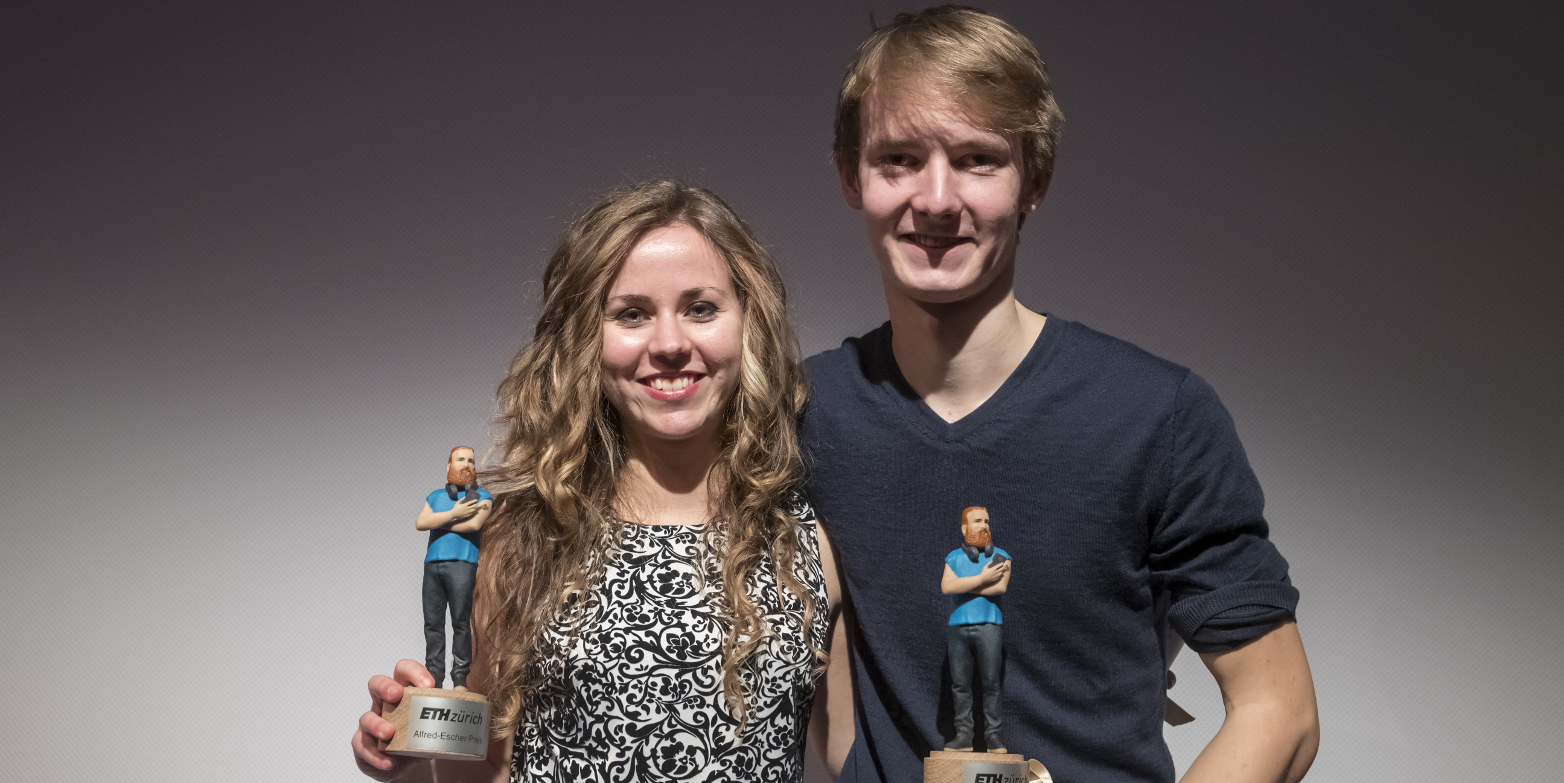
“Switzerland needs curious, inventive, meticulous, courageous, creative thinkers and good communicators to keep its position as a technological world leader.” Detlef Günther, ETH Vice President Research and Corporate Relations, extended those words of welcome to around 140 guests gathered in the CABinett, VSETH’s event room, to witness the awarding of the Alfred Escher Prize. On the eve of the 200th birthday of Alfred Escher, a busy Zurich politician and entrepreneur who contributed significantly to advancing Switzerland’s technological and economic progress, ETH Zurich awarded the first Alfred Escher Prize for young innovators yesterday.
55 entries, ten finalists
The university had encouraged submissions from apprentices and secondary school pupils aged 17 to 20 and university students up to the age of 25. A total of 55 technical innovations were submitted in the two age categories. After an expert jury pre-selected five finalists from each category, the contestants presented their projects in three-minute pitches. The magician Christian Bischof moderated the evening and kept everyone entertained with his magic tricks.
Following the presentations, the jury, chaired by Günther and consisting of Hans Baumgartner, Director Zurich Region at Credit Suisse, Marjan Kraak from the ETH Zurich Technology Transfer Centre, Suzanne Thoma, CEO of BKW, and Roger Wüthrich-Hasenböhler, Chief Digital Officer at Swisscom, chose the winner and the second and third runners-up.
Their decision was not easy: all candidates presented completely different ideas and approaches. Their projects ranged from new solutions for generating solar energy, food production and transport methods to virtual learning tools, treatments for retinal disease and innovative lighting solutions.
Smart learning environments
Ultimately, educational software concepts won in both age categories. EdVR is a program developed by Jeremias Baur (17), a final-year secondary school student, that teaches scientific and technical materials at school level in an interactive, playful way. Günther commented that the project was an excellent example of how young people could create a modern learning environment suitable for them. Silvia Lama chose a similar approach. The 23-year-old ETH student at the Department of Management, Technology and Economics developed Musa, a 3D game that teaches children to play musical instruments. During her presentation, she explained: “Many children want to learn an instrument, but half of them give up very quickly.” To prevent them from losing interest, she has taken advantage of children’s love of computer games. The jury was particularly persuaded by her argument that learning an instrument improves children’s cognitive abilities. This is an important foundation for creativity and imaginative ideas in later life.
The reward: project funding and a trip to a start-up centre
Lama won CHF 8,000 in sponsorship from Credit Suisse for further development of her project. Baur’s prize is a trip to a start-up centre, complete with free coaching. “I am sure I will be able to learn something for my future there,” he commented happily. Second place in Category 1 went to Leonardo Rössler with his concept for a smart light-reflecting display, for which he also won the audience prize. Théophile Ischer’s aquaponics project, which enables fish farming and food production in the smallest of spaces, was placed third. In Category 2, Project Snowhaze by a team of ETH students took second place. It is a secure browser and anonymous VPN service that prevent data theft. Third place went to the Eurotube team, consisting of students from ETH Zurich and EPF Lausanne who developed an innovative vacuum transport system that is already entering its trial stage.
 ETH President Joël Mesot and Escher Prize winner Jeremias Baur in discussion.
ETH President Joël Mesot and Escher Prize winner Jeremias Baur in discussion.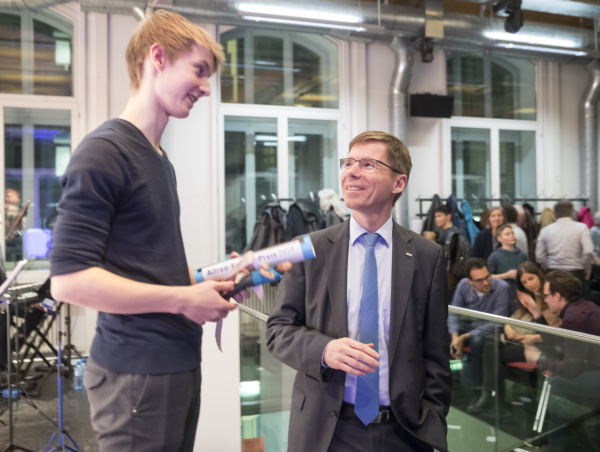 They chose the deserving winners (left to right): Detlef Günther, ETH Vice President Research and Corporate Relations, Roger Wüthrich (Swisscom), Suzanne Thoma (BKW), Marjan Kraak (ETH Transfer), Hans Baumgartner (CS).
They chose the deserving winners (left to right): Detlef Günther, ETH Vice President Research and Corporate Relations, Roger Wüthrich (Swisscom), Suzanne Thoma (BKW), Marjan Kraak (ETH Transfer), Hans Baumgartner (CS).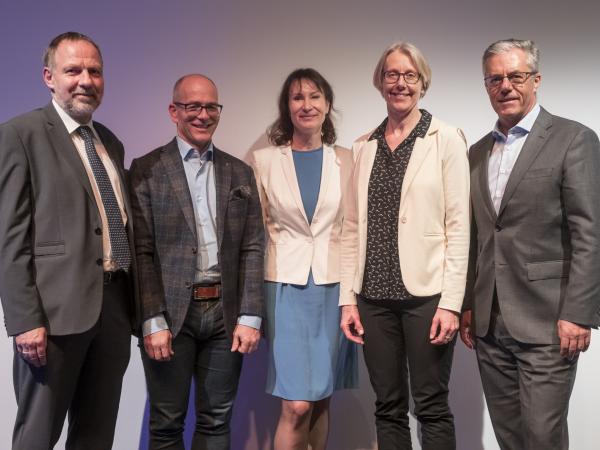 Excellent entertainment all round: magician and event moderator Christian Bischof (Photo: Alessandro Della Bella / ETH Zurich).
Excellent entertainment all round: magician and event moderator Christian Bischof (Photo: Alessandro Della Bella / ETH Zurich).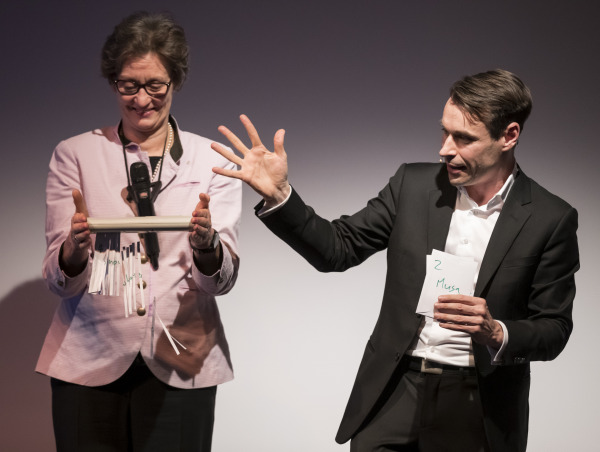 The guests of the event during the reception.
The guests of the event during the reception.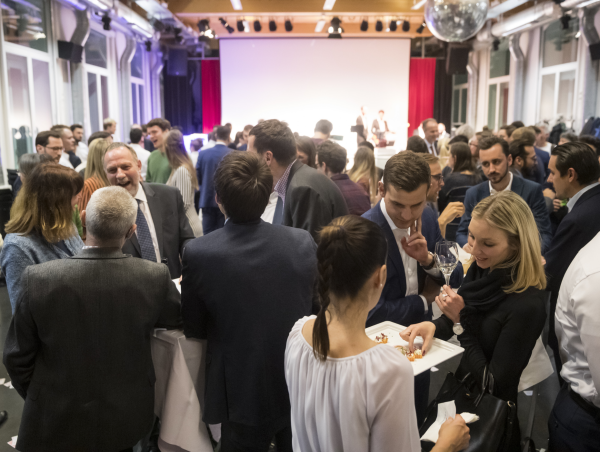 Former President of ETH Zurich, Ralph Eichler.
Former President of ETH Zurich, Ralph Eichler.
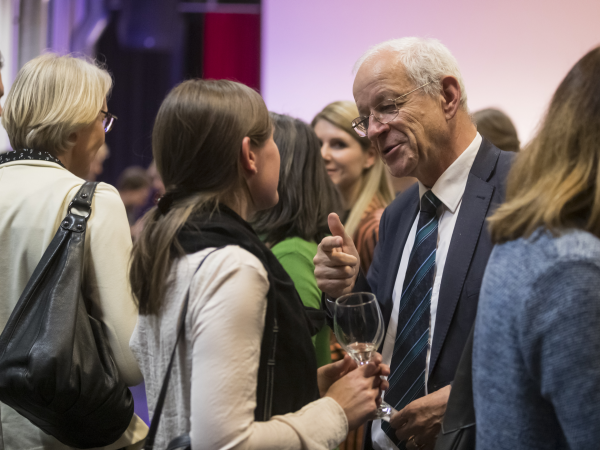 The audience showed commitment during the awarding of the Alfred Escher Prize.
The audience showed commitment during the awarding of the Alfred Escher Prize.
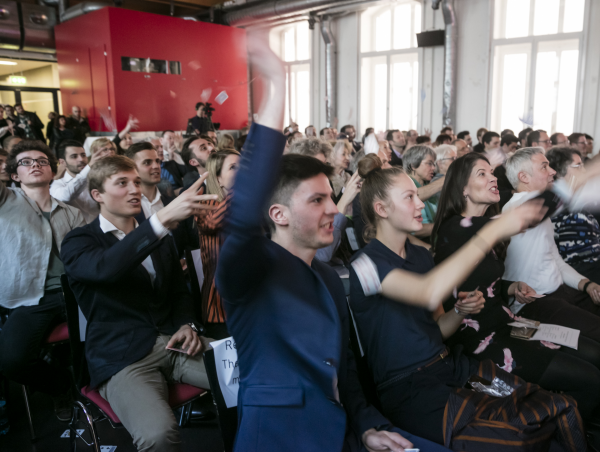 Rector Sarah Springman in conversation with the family of the winner Jeremias Baur.
Rector Sarah Springman in conversation with the family of the winner Jeremias Baur.
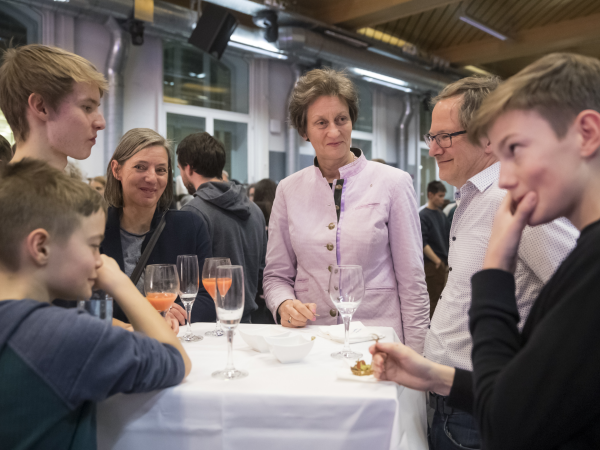 The winner Silvia Lama with her Alfred Escher Prize.
The winner Silvia Lama with her Alfred Escher Prize.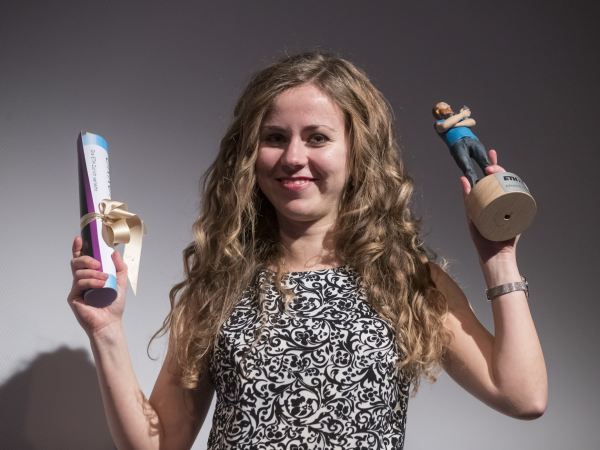
The finalists
Category 1: secondary school pupils and apprentices aged 17 to 20
First prize: edVR – Educational Virtual Reality Application. A virtual learning environment for STEM subjects. Interactive experiments help users understand the taught topics in depth.
Second prize: A light-reflecting display based on thermochromic pigments. The pixels consist of pigments that can change colour; the human eye does not perceive them as artificial, but sees a “natural” colour.
Third prize: Aquaponics: A small, environmentally friendly aquaponics system for urban food production.
Category 2: Students up to the age of 25
First prize: Play-Musa: A 3D game for children that can be played with a real musical instrument.
Second prize: Snowhaze – privacy made simple: A browser and an anonymous VPN authentication protocol that gives the user full control over their data and prevents tracking.
Third prize: Eurotube: A non-profit research organisation that develops technologies for sustainable high-speed transport systems in a vacuum and builds test facilities.
